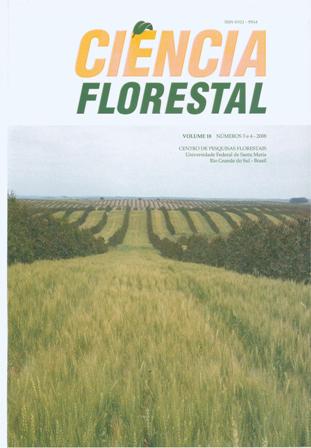GASIFICATION OF LIGNOCELLULOSIC MATERIALS FOR GENERATION OF ELECTRIC ENERGY
DOI:
https://doi.org/10.5902/19805098435Keywords:
gasification, electric power, plant coal, residues.Abstract
The objective of this work was to build a countercurrent gasifier in hardened mortar to evaluate the potential of generating electrical energy of eucalyptus species grown in the state of Minas Gerais, from agroindustry residues and from the mixture of those materials. The immediate chemical composition and the heat power of the materials utilized were determined. The different lignocellulosic materials were experienced, and gas was used as the control. For the factors being tested, measurements of the electric yields and consumptions of the materials were performed. The statistical design was the completely randomized with seventeen treatments and three replicates done at 5% of significance. On the basis of the results obtained and on the statistical analyses performed, it follows that the gasifier-generator set is easy to build, made with easily purchased and low cost materials. Among the materials evaluated the coal of the species, Corimbia citriodora, with 78% of fixed carbon, presented the best performance of generated power, obtaining 1,391 watts, with a constant tension of 230 volts. The residues utilized of cane bagasse, rice straw, corn cob, coffee husk and coal chaff presented no potential to generate energy by the sort of gasifier utilized.
Downloads
References
ASSOCIAÇÃO BRASILEIRA DE NORMAS TÉCNICAS – ABNT. Normas técnicas NBR 6922. 1981.
ASSOCIAÇÃO BRASILEIRA DE NORMAS TÉCNICAS – ABNT. Normas técnicas NBR 8633. 1983.
ASSUMPÇÃO, R. M. V. Gaseificação de madeira e carvão vegetal. In: FUNDAÇÃO CENTRO TECNOLÓGICO DE MINAS GERAIS/CETEC. Gaseificação de madeira e carvão vegetal. Belo Horizonte, 1981. p. 51-72.
CARVALHO, A. S. Gasogênio de alvenaria. Brasilia, DF: EMBRATER, 1987 43 p. (EMBRATER. Manuais; 33).
DIAS, G. P. Efeito da vazão de ar e dos diâmetros da setia e do reator na temperatura de combustão em um gaseificador de fluxo concorrente. 1986. 57 p. Dissertação (Mestrado) – Universidade Federal de Viçosa, Viçosa, MG.
CALLE, Frank R.; BAJAY, S. V.; ROTHMAN, H. Uso da biomassa para produção de energia na indústria brasileira. Campinas, SP: UNICAMP, 2005.
MALUF, W. R. Preparo da casca de arroz carbonizada. Lavras: UFLA, 1998. (Boletim Técnico de Hortaliças, v. 12).
MENDES, L. M. Influência do carvão vegetal no desempenho de um gaseificador-gerador de energia elétrica. 1994. 50 f. Dissertação (Mestrado) – Universidade Federal de Viçosa, Viçosa, MG.
NASCIMENTO, J. W. B. Secagem de milho utilizando energia térmica de um gasogênio de fluxo transversal descendente. 1991. 186 p. Dissertação (Mestrado) – Universidade Federal da Paraíba, Campina Grande.
REIS, O. G. Gasogênio rústico construído em alvenaria alternativa na propriedade rural. Brasília, DF: EMBRATER, 1984, 20 p. (EMBRATER. Informações técnicas, 5).
SANTOS, J. W. C. Influência do teor de umidade e da granulometria do carvão vegetal no desempenho do motor de um trator adaptado para funcionar a gás pobre. 1981. 46p. Dissertação (Mestrado) – Universidade Federal de Viçosa, Viçosa, MG.







